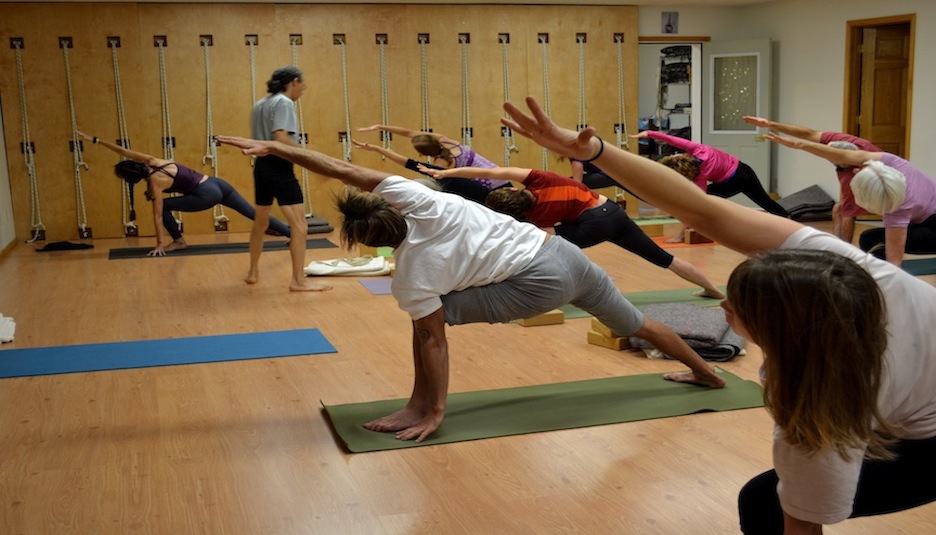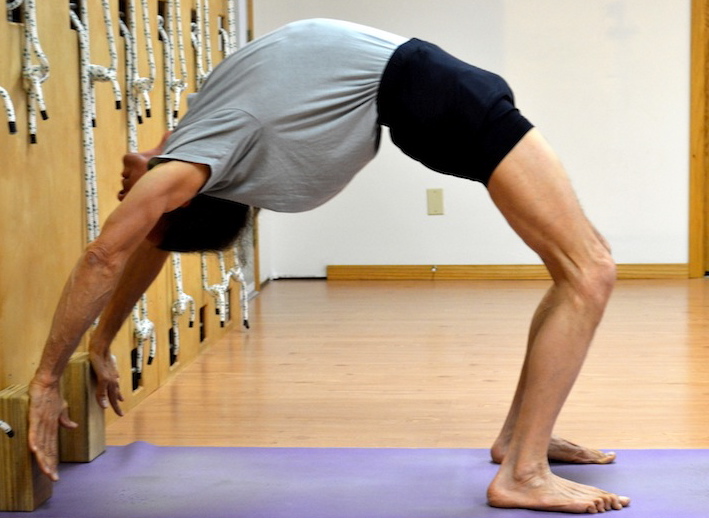Ways of Practice +
Yoga Pose Galleries
Iyengar Yoga practice is varied. Here you can access yoga pose galleries and learn more about different types of Iyengar Yoga ways of practice --
Classical asanas (poses) refer to the way that poses have been practiced by yogis throughout the ages. Many of the most important asanas were illustrated by BKS Iyengar in his landmark book Light on Yoga.
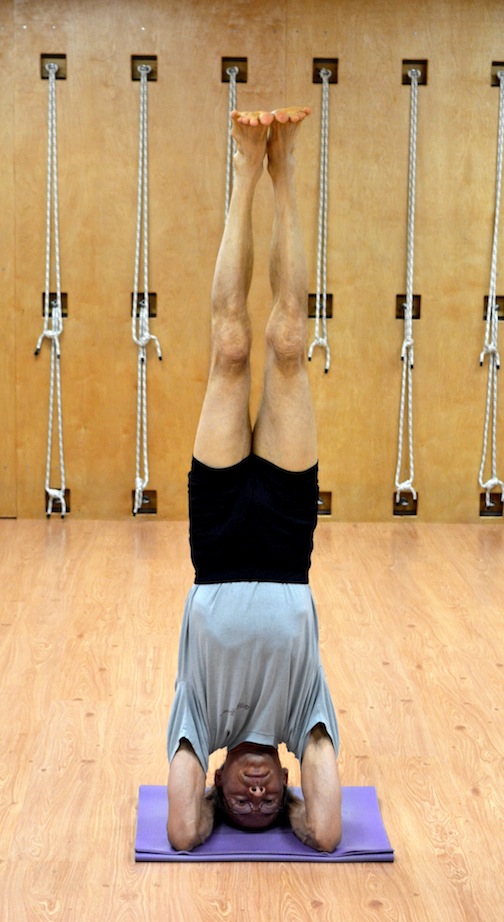 Sirsasana I |
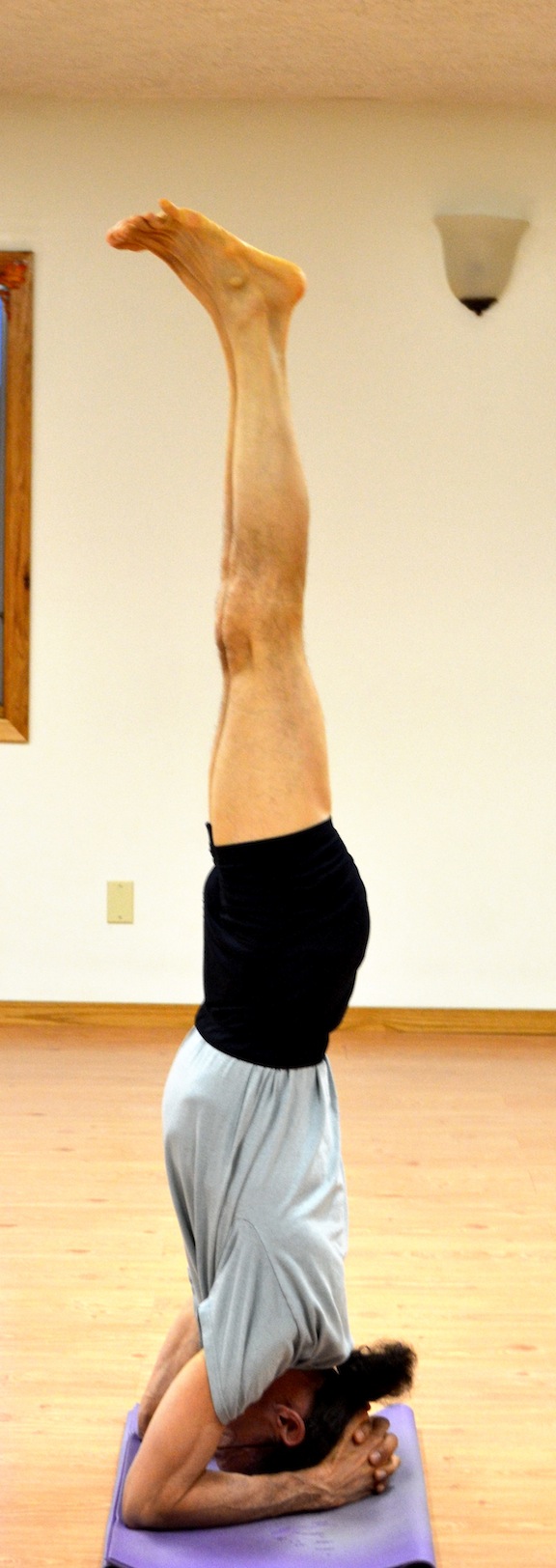 Sirsasana I |
Asana variations are rooted in the classical pose, but require a deeper understanding and more advanced practice. They involve different positions of the arms and legs. Both Classical asanas and their variations are done without props and were in existence prior to BKS Iyengar’s teaching innovations.
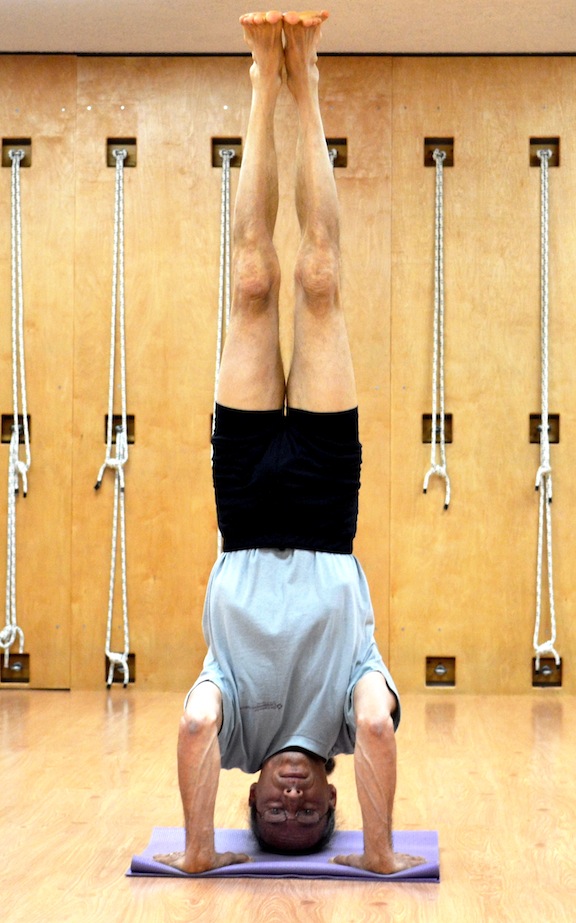 Sirsasana II |
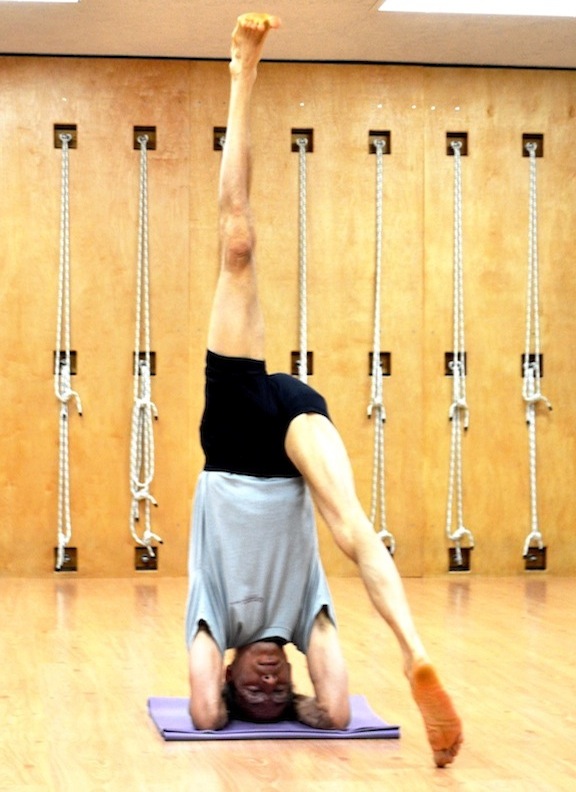 Eka Pada Sirsasana |
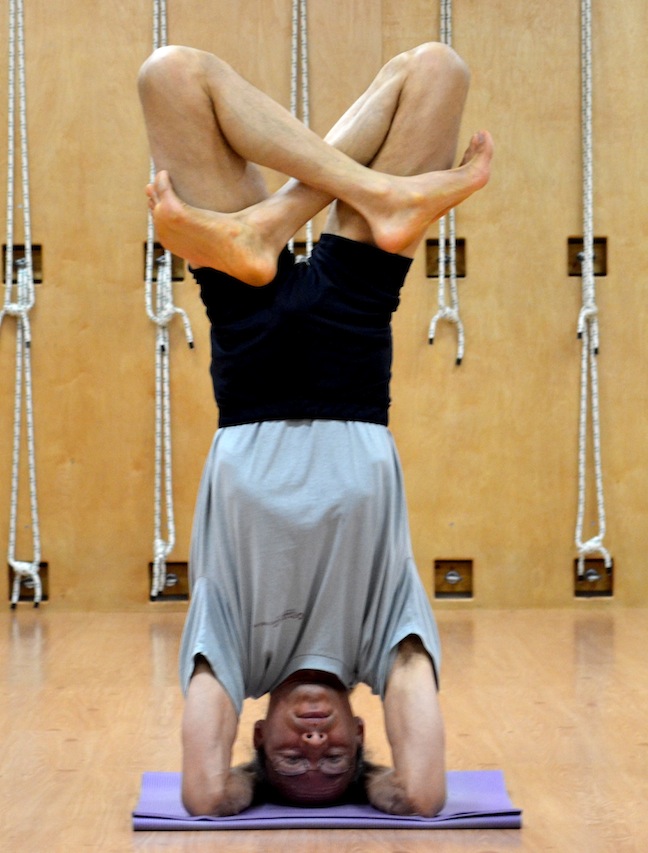
Padmasana In Sirsasana
Vinyasa practice refers to when classical asanas are linked in a dynamic flow from one pose to the next. The sun salutation sequence, known as surya namaskar, is used as the foundation upon which additional classical poses are performed. Many other styles of yoga are based on vinyasa practice including astanga yoga, power yoga, hot yoga, and flow yoga. In the Iyengar system, vinyasa is best suited to young people but regularly practiced by all Iyengar yogis.
Asana modifications developed by BKS Iyengar
After viewing animals in nature, obtaining his wife’s assistance in the performance poses, and guiding students of varying physical abilities, BKS Iyengar developed the use of props for modified versions of classical poses. He uses props (blocks, chairs, blankets, wooden equipment of specified measurements) to help students achieve correct biomechanical alignment, support areas of instability, achieve greater flexibility in specific problem areas, and foster relaxation.
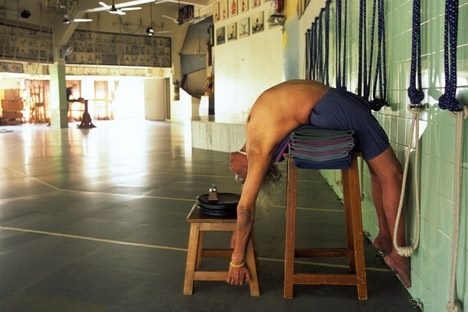
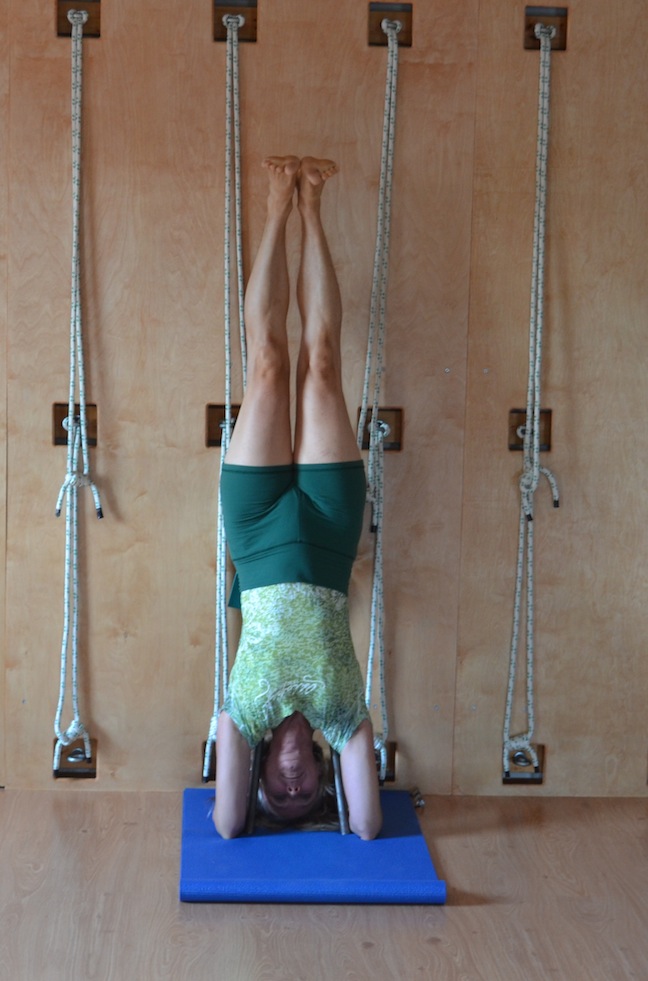 Sirsasana With Poles |
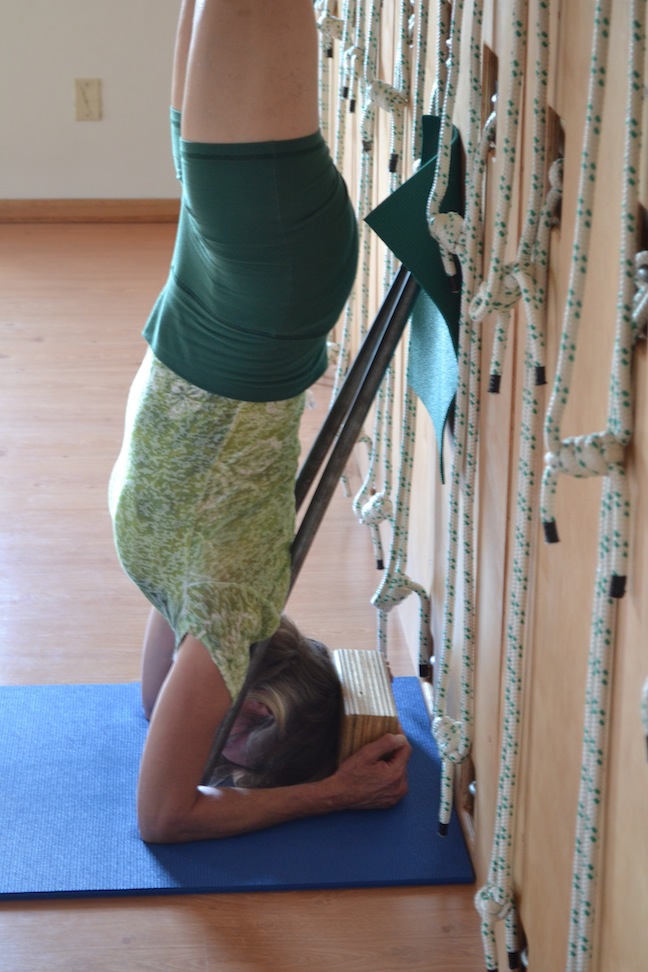 Sirsasana With Poles |
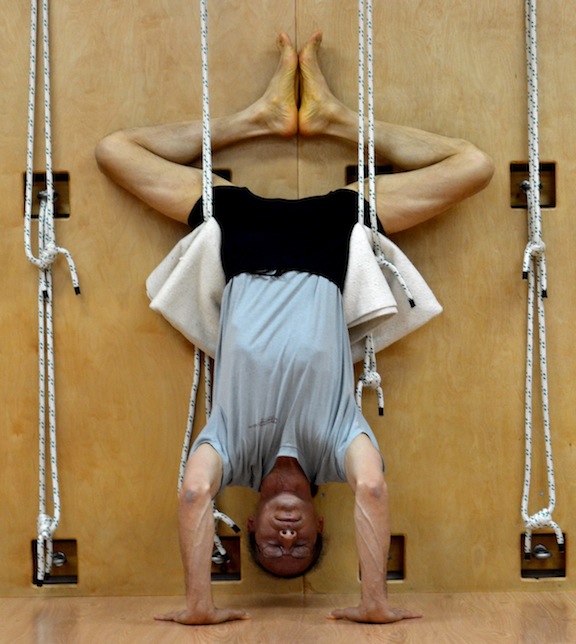 Hanging Sirsasana II |
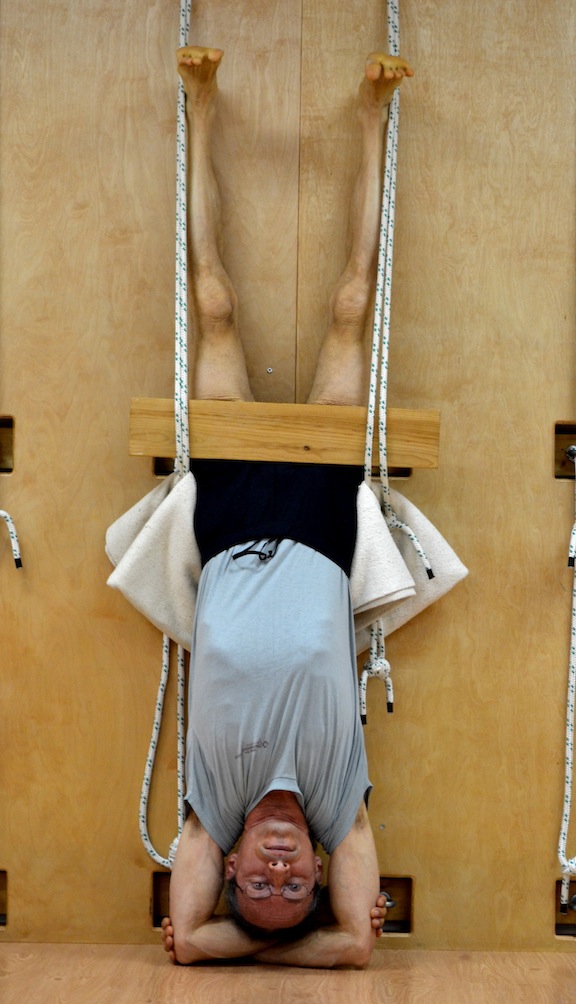 Hanging Sirsasana |
Karunta yoga refers to the use of wall ropes in the modified asanas.
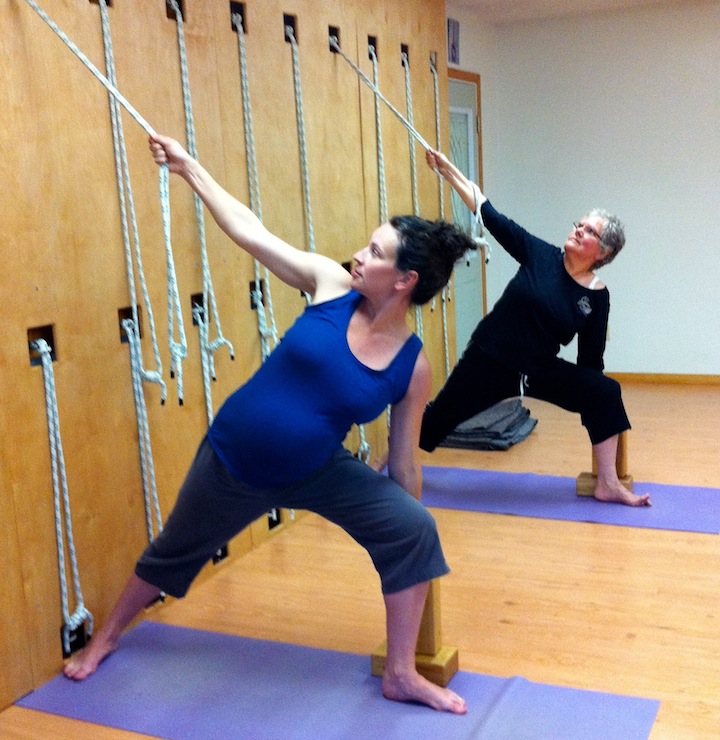 Utthita Parsvakonasana |
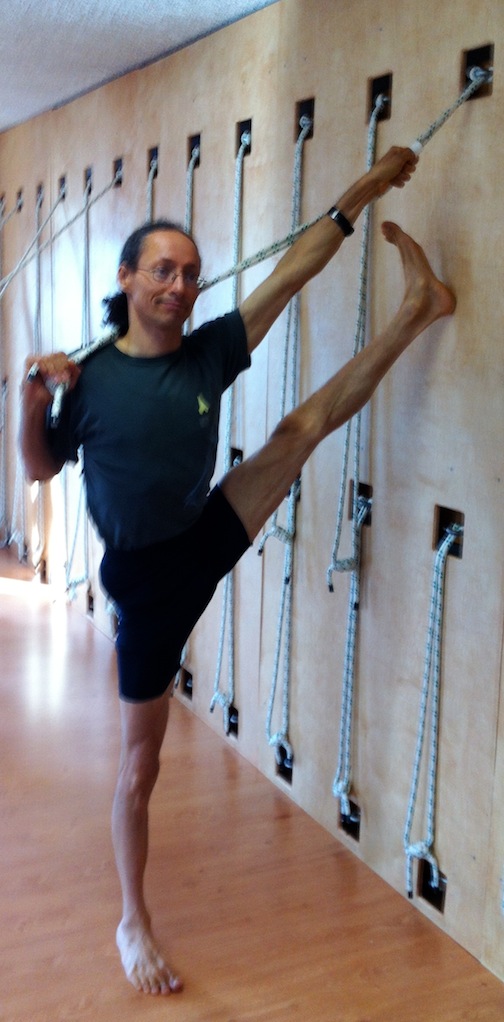 Utthita Hasta Padangusthasana |
These asana modifications can be restorative and therapeutic. Restorative poses are used to help students stay in a pose longer (2-5 minutes instead of 30 seconds), giving more time for physiological change, deep relaxation, and recovery from stress to occur. As a result, they prepare the student for the practice of pranayama (control of the breath) and meditation.
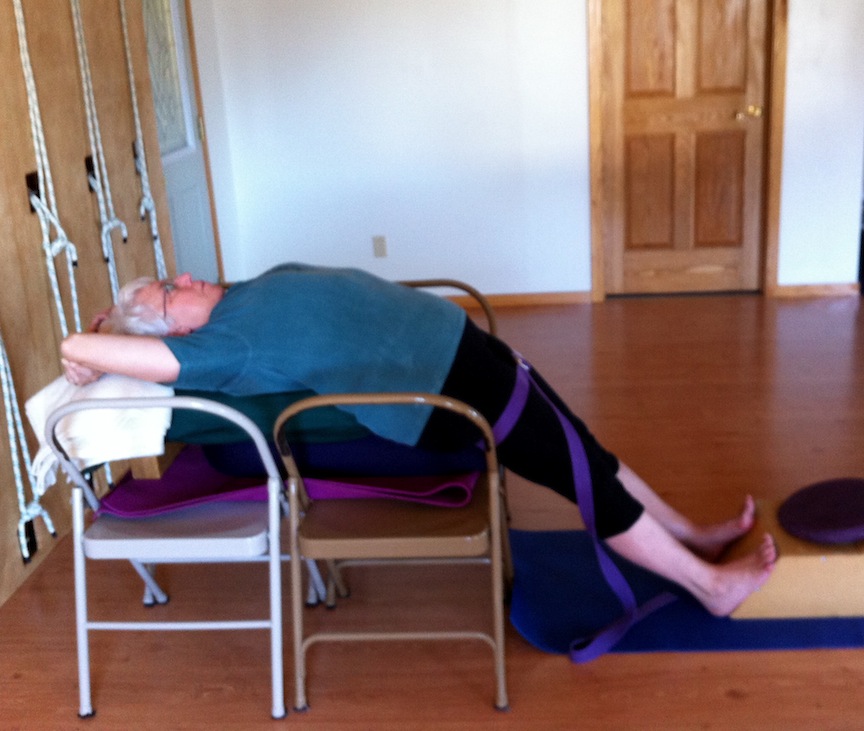 Supported Salamba Purvottanasana |
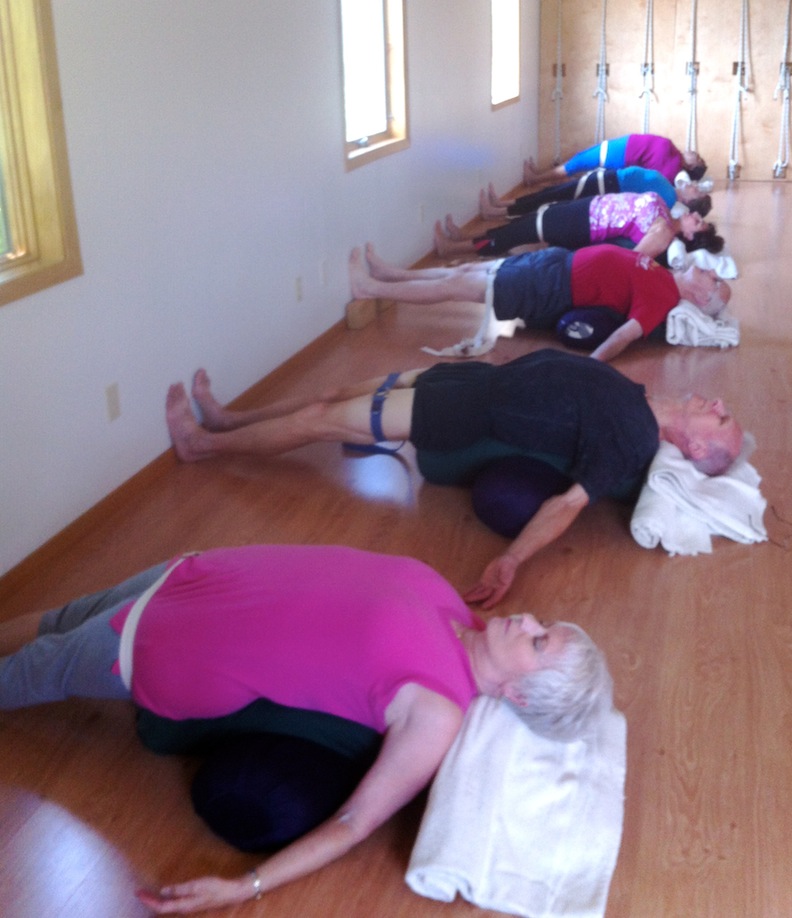 Cross Bolsters |
The therapeutic application of Iyengar yoga utilizes both active and restorative poses (often with support) with the aim of minimizing pain by addressing the underlying musculoskeletal, organic, and psychological imbalances contributing to the condition.
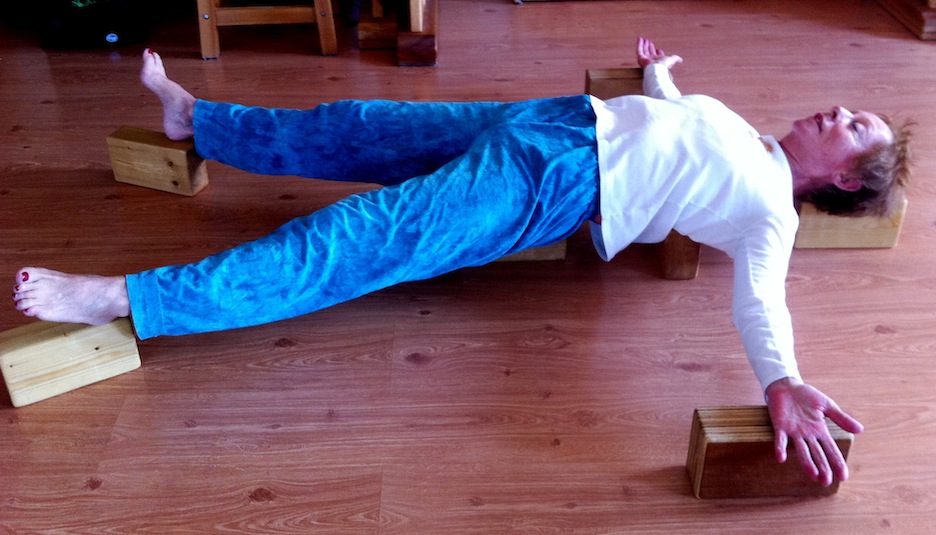 Savasana on Blocks |
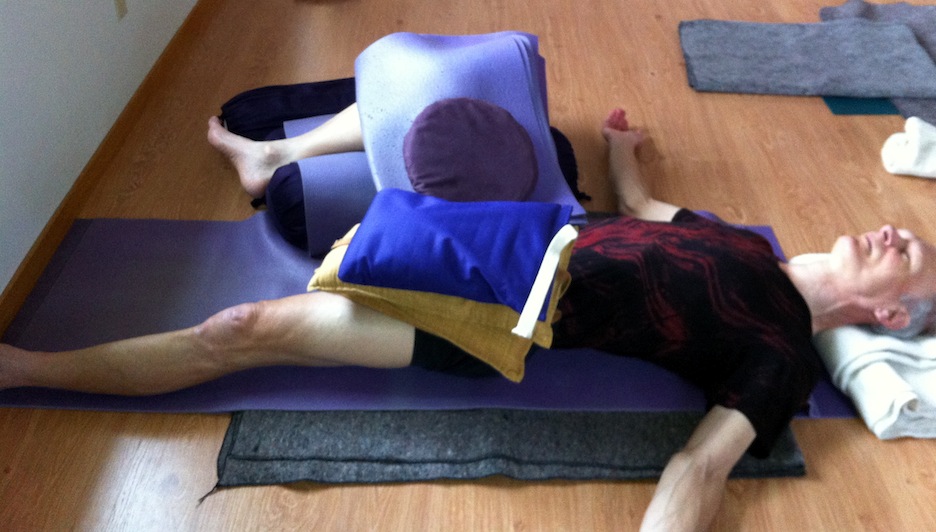 Supported Supta Padangusthasana |
Yoga Galleries
